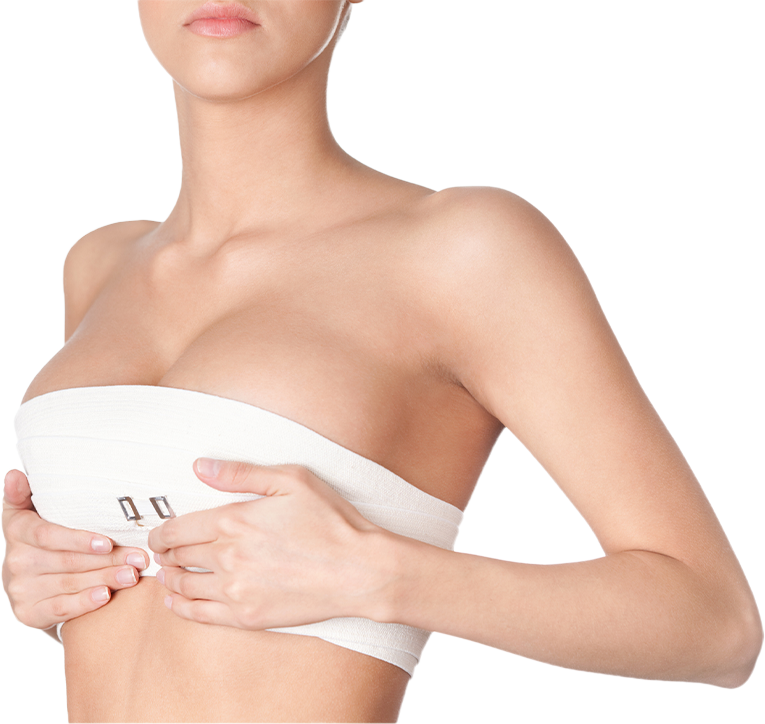Main Content
Introduction
Facial fat transfer—also known as autologous fat grafting—is a minimally invasive treatment that restores volume, smooths lines, and reshapes facial contours using your own body’s fat cells. Ideal for the cheeks, temples, under-eye hollows, and lips, it offers a natural alternative to synthetic fillers. At our Sandy Springs center (serving Buckhead and the greater Atlanta area), Dr. Carmen Kavali employs advanced harvesting, processing, and injection techniques to deliver predictable, long-lasting rejuvenation tailored to each patient’s anatomy and goals.
What Is Facial Fat Transfer?
Facial fat transfer involves three key stages:
-
Harvesting
Fat is gently suctioned via micro-cannula liposuction from donor sites such as the abdomen, flanks, or thighs, using a tumescent technique to minimize bleeding and discomfort.
-
Processing
The harvested fat is purified—by low-speed centrifugation, specialized filtration, or gravity decanting—to isolate healthy adipocytes and stromal vascular cells, removing oil, blood, and debris.
-
Injection
Purified fat is injected through fine cannulas in multiple micro-aliquots across different tissue layers (subcutaneous and supra-periosteal) to restore volume, smooth wrinkles, and refine contours. Grafted cells establish blood supply within 2–3 weeks, after which the results become permanent.
Because the fat is autologous (from your own body), there’s virtually no risk of allergic reaction or rejection.
Key Benefits of Facial Fat Transfer
- Natural Results: Your tissue integrates seamlessly for a soft, lifelike feel.
- Longevity: Surviving fat cells remain permanently, offering lasting augmentation.
- Dual Benefit: Improves body contour at the donor site while rejuvenating the face in one procedure.
- Soft-Tissue Regeneration: Stromal vascular cells in grafted fat can stimulate collagen and enhance skin quality.
- Versatility: Addresses multiple concerns—cheek volume loss, under-eye hollows, smile lines, lip enhancement, and jawline definition.
Who Is a Candidate?
Ideal candidates for facial fat transfer in Sandy Springs, Buckhead, and Atlanta are:
- Adults with Stable Weight: Within 10% of their target weight to ensure consistent graft survival.
- Mild to Moderate Volume Loss: Early signs of aging, contour irregularities, or post-traumatic/facial surgery deficits.
- Overall Healthy: No uncontrolled medical conditions, bleeding disorders, or active infections.
- Non-Smokers (or Willing to Quit): Tobacco cessation four weeks before and after enhances healing and graft take.
- Realistic Expectations: Understanding that 20–40% of the grafted fat may resorb and that touch-up sessions can optimize results.
During your consultation, Dr. Kavali evaluates your facial anatomy, skin quality, and donor-site availability to confirm candidacy and set clear expectations.
Customized Treatment Planning
-
Comprehensive Evaluation
Review medical history, current medications, and specific aesthetic concerns.
-
Photographic Analysis
Standardized front, oblique, and profile images document volume deficits and guide injection mapping.
-
Donor-Site Assessment
Identify optimal harvest areas based on available adipose tissue and patient preference.
-
Volume Estimation
Calculate target graft volume for each facial zone, accounting for expected resorption.
-
Technique Selection
Choose between centrifugation, filtration, or micro-fat/macro-fat layering to maximize graft viability.
This individualized plan ensures facial fat transfer precisely addresses cheek volume, nasolabial folds, jawline contour, and other targeted areas.
The Procedure in Detail
1. Anesthesia & Preparation
- Options: Local anesthesia with oral or IV sedation for comfort; general anesthesia for extensive or combined procedures.
- Safety Measures: Prophylactic antibiotics, site marking, and intraoperative monitoring.
2. Fat Harvesting
- Micro-Cannula Liposuction: Gentle aspiration from abdomen, flanks, or thighs preserves cell integrity.
- Tumescent Technique: Infusion of dilute anesthetic minimizes bleeding and discomfort.
3. Fat Processing
- Centrifugation: Low-speed spin separates fat from fluid and oil.
- Filtration: Specialized filters isolate pure adipose tissue.
- Decanting: Gravity separation for minimal handling.
4. Fat Injection
- Micro-Fat Layering: Small aliquots placed in fans or threads ensure even distribution.
- Precise Placement: Cannulas target subcutaneous and supra-periosteal planes for a natural contour.
- Molding & Sculpting: Gentle massage shapes the graft and reduces irregularities.
⏱️ Duration: 1–3 hours (depending on treatment areas and any combined procedures)
🏥 Setting: Outpatient—same-day discharge with a responsible escort
Preparing for Your Procedure
- Medical Clearance: Routine labs and EKG (if indicated).
- Medication Review: Discontinue aspirin, NSAIDs, certain supplements, and herbal agents 10–14 days prior.
-
Lifestyle Modifications:
- Stop smoking/vaping four weeks before and after.
- Avoid alcohol one week pre- and post-procedure.
-
Logistics:
- Arrange transportation home and 48–72 hours of light activity.
- Prepare a recovery area with ice packs, pillows for elevation, loose clothing, and entertainment.
Following these steps minimizes complications and supports optimal graft survival.
Recovery & Aftercare Guidelines
Days 1–3
- Swelling & Bruising: Peaks around day two; manage with cold compresses and head elevation.
- Compression Garments: Wear donor-site wraps to control bleeding and discomfort.
- Activity: Rest; avoid bending, straining, and heavy lifting.
Days 4–7
- Light Movement: Gentle walking boosts circulation.
- Wound Care: Keep harvest and injection sites clean; begin gentle massage if instructed.
- Nutrition & Hydration: High-protein diet and fluids support healing.
Weeks 2–4
- Swelling Reduction: Approximately 60–80% decrease by week two.
- Return to Work: Desk duties typically resume within five to seven days.
- Avoid Pressure: No tight masks or facial rollers for four weeks.
Months 1–3
- Final Contours: Surviving fat integrates; residual swelling resolves by month three.
- Follow-Up Visits: Scheduled at one week, one month, and three months to assess graft retention and symmetry.
- Touch-Ups: Optional minor grafting may address areas of higher resorption.
Strict adherence to aftercare is essential for achieving optimal long-term results.
Risks & Safety Considerations
Facial fat transfer is a safe procedure when performed by experienced hands. Potential complications include:
- Infection: Minimized by sterile technique and antibiotics.
- Fat Necrosis/Cysts: May form small nodules; most resolve or are massaged gently.
- Asymmetry: Rare, correctable with minor revision grafting.
- Over- or Under-Correction: Conservative initial grafting allows safe follow-up enhancements.
- Donor-Site Irregularities: Seromas or contour defects managed with compression or minor revision.
Dr. Kavali’s meticulous technique and comprehensive aftercare ensure low complication rates and high patient satisfaction.
Combining Fat Transfer with Other Procedures
For comprehensive rejuvenation, facial fat transfer can be combined with:
- Blepharoplasty (Eyelid Surgery): Addresses eyelid laxity while adding volume to periorbital hollows.
- Rhytidectomy (Facelift): Lifts sagging tissues and restores volume in hollowed areas.
- Brow Lift: Corrects forehead lines and maintains temple volume.
- Neck Liposuction/Platysmaplasty: Refines jawline and neck contour alongside midface augmentation.
Bundled procedures streamline recovery, reduce anesthesia exposures, and deliver cohesive results.
Choosing the Right Surgeon & Facility
When seeking facial fat transfer in Sandy Springs, Buckhead, or Atlanta, look for:
- Board Certification: ABFPRS or equivalent credentials in plastic surgery.
- Accredited Facility: AAAASF, AAAHC, or The Joint Commission accreditation.
- Before-and-After Gallery: Real patient images that match your desired outcomes.
- Patient Testimonials: Consistent praise for surgical skill, bedside manner, and follow-up care.
Dr. Carmen Kavali meets these standards, offering advanced fat-grafting techniques in a modern, fully accredited surgical suite in Sandy Springs.
Lifestyle Impact & Long-Term Maintenance
- Longevity: Surviving fat cells remain permanently; stable weight and healthy habits preserve results.
- Skin Quality: Fat’s regenerative cells may improve skin texture over time.
- Resumption of Activities: Most patients return to exercise and everyday routines by four to six weeks, avoiding facial trauma.
- Sun Protection: Daily sunscreen and skincare support youthful, long-lasting outcomes.
Regular follow-ups allow early detection and management of any late-onset concerns.
Next Steps: Scheduling Your Consultation
Ready to restore youthful volume with facial fat transfer? Contact Monarch Plastic Surgery & Skin Renewal Center:
- Call: 404.250.3333
- Email: info(at)drkavali(dotted)com
- Visit: 6045 Barfield Rd, Suite 100, Atlanta, GA 30328
- Online: Request a Consultation
Your personalized evaluation will include precise facial mapping, donor-site assessment, and a clear treatment plan—helping you achieve natural, lasting rejuvenation in Sandy Springs, Buckhead, and the Atlanta area.


